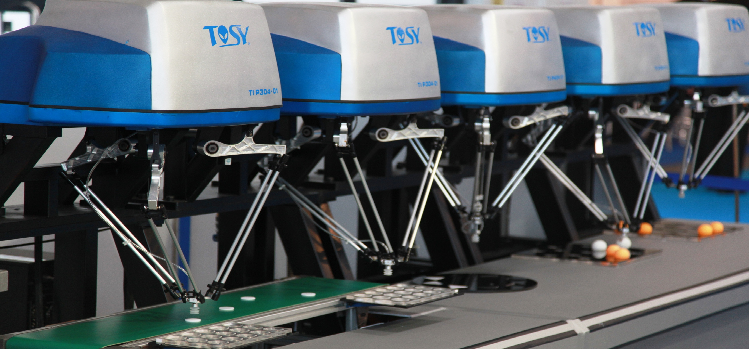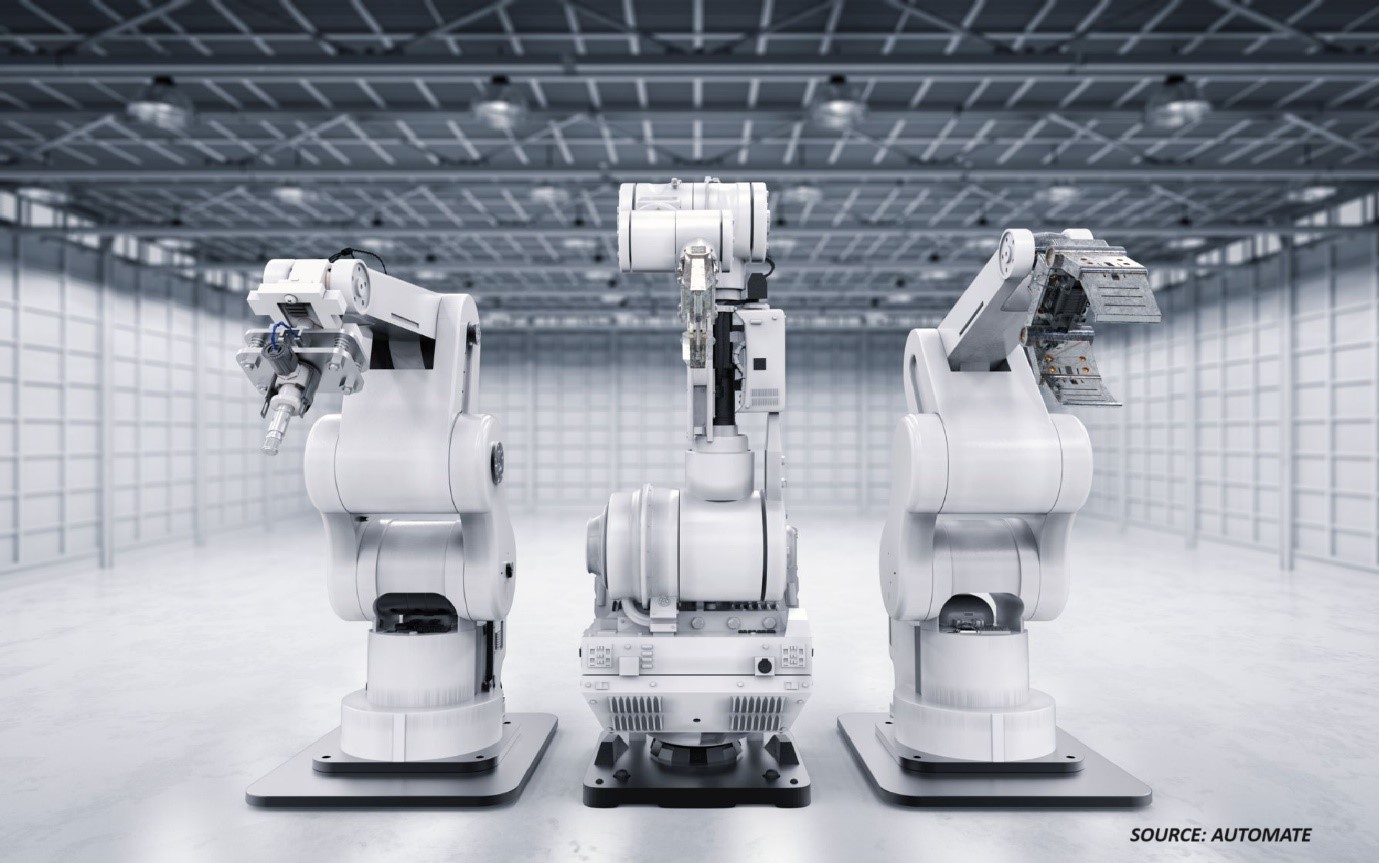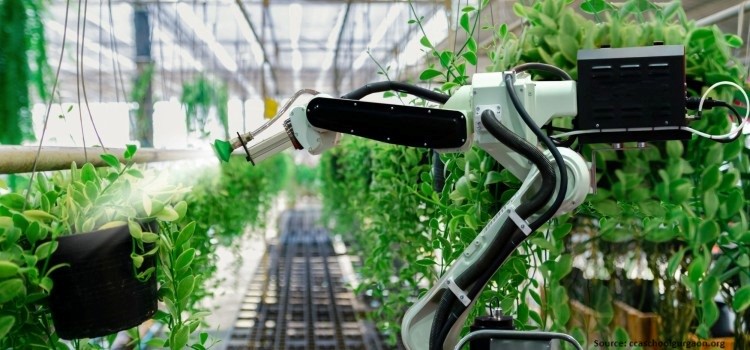Frontline Technologies Redefining the World of Delta Robotics
05-Sep-2024

Introduction
In the ever-evolving world of robotics, a class of machines has quietly revolutionized precision automation–the delta robot. Engineers, tech enthusiasts, and those simply curious about the future of robotics will find this blog to be their compass in navigating the exciting trends shaping the world of delta robots.
With their unique parallel kinematic structure, delta robots have been at the forefront of industries that demand speed, precision, and agility. They have demonstrated their prowess across various domains, ranging from pick-and-place tasks in the manufacturing industry to delicate operations in the pharmaceutical industry.
As technology advances at a remarkable pace, the capabilities of delta robots have increased as well. This blog serves as a gateway to the latest developments, innovations, and trends in delta robotics.
Rise of Collaborative Delta Robots
Collaborative delta robots are a specialized class of industrial robots capable of working and operating safely with humans in shared workspaces. They are characterized by their delta or parallel kinematic structure, which allows for high-speed and precise movements in a three-dimensional space. These robots are equipped with sensors and safety features that enable them to detect and respond to the presence of humans, ensuring safe interaction.
Collaborative delta robots are adopted in various industries beyond traditional manufacturing, including electronics, food and beverage, pharmaceuticals, and logistics. Their versatility makes them suitable for tasks, such as pick-and-place operations, assembly, packaging, quality control, and even medical applications.
The primary distinguishing feature of collaborative delta robots is their ability to work safely alongside human workers without the need for extensive safety barriers or cages. This is achieved through advanced safety technology, such as force sensing, torque limiting, and collision detection. The emphasis on safety is critical to prevent accidents and injuries in a collaborative workspace.
In June 2021, Wyzo, a tech startup, launched the world's first high-speed pick and place technology called the Wyzo Sidebot. This is a collaborative delta robot designed to work safely alongside humans and conduct high-speed pick-and-place tasks. The robot is fast, compact, and flexible. It has a footprint of less than 0.5 m2 and just 1.8 m in height, making it easy to fit anywhere on a production floor.
Integration with the Industry 4.0
As industries transition towards smart manufacturing and the Industry 4.0, delta robots follow the suit. They are integrated into connected ecosystems, in which they can communicate and collaborate with other machines and systems. This connectivity enables real-time data sharing, remote monitoring, and predictive maintenance, resulting in more efficient and responsive manufacturing processes.
Delta robots are particularly suited for high-speed pick-and-place applications, in which rapid movement and accurate positioning are critical. Industries commonly using delta robots include food and beverage, pharmaceutical, and electronics manufacturing. Predictive maintenance relies heavily on technology and software, particularly the integration of the Internet of Things (IoT), artificial intelligence (AI), and other technologies.
These systems connect various assets, enabling data sharing, analysis, and actionable insights. Creating value in smart connected manufacturing includes setting up networks of products and services that work together to change how operations, supply chains, and customer interactions function. This involves updating and expanding the digital tools used to make it easier for internal and external partners. It also involves automating tasks to make everything run more efficiently.
AI and Machine Learning Integration
Delta robots enhance their capabilities by incorporating artificial intelligence (AI) and machine learning algorithms. AI-powered delta robots can learn from past experiences, optimize their movements, and make real-time decisions, making them more adaptable to dynamic manufacturing scenarios. The selection of a controller for delta robots depends on factors, such as the complexity of the delta arm's movements, the desired level of precision, and the integration requirements with other systems or devices.
Delta robots are particularly suited for high-speed pick-and-place applications, where rapid movement and accurate positioning are critical. The integration of delta robots in manufacturing allows for increased throughput and efficiency. The combination of AI and robots offers the opportunity to achieve both productivity and flexibility simultaneously.
Customization and Scalability
Modern manufacturing demands flexibility, and delta robots are rising to the challenge by becoming more customizable and scalable. Manufacturers can now configure delta robots to meet specific application requirements, such as precision assembly, pick-and-place tasks, or material handling. This adaptability allows for cost-effective automation solutions tailored to individual production needs.
For instance, in September 2023, ABB launched ABIFlexx equipped with direct drives, redefining the customization and scalability of the delta. This new version of ABB's delta robot is extremely fast, accurate, and maintenance-free, making it ideal for many applications. The ABIFlexx delta robot range is modular, and available in various finishes, including the patented Wide Delta robot. This can save up to 50% of the floor space while offering a very efficient working range. The direct drives offer many advantages compared to a traditional combination of motor and gearbox, such as energy efficiency and accuracy.
Enhanced Sensing and Robotic Vision Systems
Delta robots are becoming more perceptive with the integration of advanced sensing and vision systems. These systems enable robots to recognize objects, analyze their spatial orientation, and adjust their movements accordingly. Enhanced vision capabilities are particularly valuable in industries such as, food and electronics manufacturing, where intricate tasks require precise visual guidance. For instance, in February 2022, Blueprint Automation (BPA) launched the Spider 100v loading solution that uses a combination of four- and six-axis delta robots and an integrated vision system to pick a product and place it into trays, cartons, or cases. The vision system also provides built-in product inspection, bad product size, detecting double wraps, and others.
Miniaturization and Microassembly
Delta robots are finding new applications in miniaturization and microassembly tasks. As technology continues to shrink electronic components and devices, delta robots are employed to handle and assemble these tiny parts with precision. This trend is especially significant in the electronics and medical device manufacturing sectors.
For instance, Harvard researchers demonstrated a tiny and super-fast delta robot, which would open up new possibilities for applications in microsurgery, micro-assembly, and micromanipulation. The MilliDelta robot was created by a group of researchers from Harvard's Wyss Institute for Biologically Inspired Engineering and the John A. Paulson School of Engineering and Applied Sciences.
Energy Efficiency and Sustainability
In an era of increased environmental awareness, delta robots are becoming more energy-efficient. Manufacturers are designing robots with energy-saving features and using lightweight materials to reduce power consumption. Sustainability considerations drive the development of eco-friendly robots that align with global sustainability goals.
For instance, in July 2022, ABB took a significant step towards enhancing the lightweight capabilities of delta robots by introducing the IRB 365 as part of their expanding FlexPicker Delta robot lineup. This innovative robot, equipped with five axes and capable of handling payloads up to 1.5 kilograms, represents a remarkable combination of flexibility and speed within its category. The IRB 365 sets a new standard in the integration of light materials and components, making it a standout solution for industries requiring agile and efficient automation in handling lightweight products.
Conclusion
Delta robots have come a long way from their inception, and continue to evolve in response to the changing landscape of automation and manufacturing. The top trends in delta robots, including collaboration, the Industry 4.0 integration, AI and machine learning, customization, sensing and vision systems, miniaturization, and sustainability, are shaping the future of automation.
As these trends continue to gain momentum, delta robots will play an increasingly vital role in enhancing productivity, precision, and efficiency across various industries. Their adaptability and responsiveness to technological advancements ensure that they remain at the forefront of automation solutions, driving innovation and progress in the manufacturing world.
About the Author
 Sunanda Ghosh is a researcher with more than 3 years of experience. She has a passion for understanding consumer behavior and market trends, and uses her skills in innovative ways to gather and analyze data. Throughout her career, she has worked with a diverse range of global clients across various industries including technology, semiconductor, and energy. She is dedicated to providing valuable insights that can help shape a company's direction and drive success. The author can be reached at sunanda.ghosh@nextmsc.com
Sunanda Ghosh is a researcher with more than 3 years of experience. She has a passion for understanding consumer behavior and market trends, and uses her skills in innovative ways to gather and analyze data. Throughout her career, she has worked with a diverse range of global clients across various industries including technology, semiconductor, and energy. She is dedicated to providing valuable insights that can help shape a company's direction and drive success. The author can be reached at sunanda.ghosh@nextmsc.com
Add Comment
Related Blogs
How Abb, Basler, and Teledyne Are Shaping the Future of Vision-Guided Robotics Industry
The vision-guided robots market is witnessing robust growth,...
Leading Companies Revolutionizing the Agriculture Robots Market
The Agriculture Robots Market, valued at USD 8.78 billion in 2023, is set to sur...
The Top 10 Companies Shaping the Global Explainable AI Landscape
As reported by Next Move Strategy Consulting the global explainable AI market wa...










